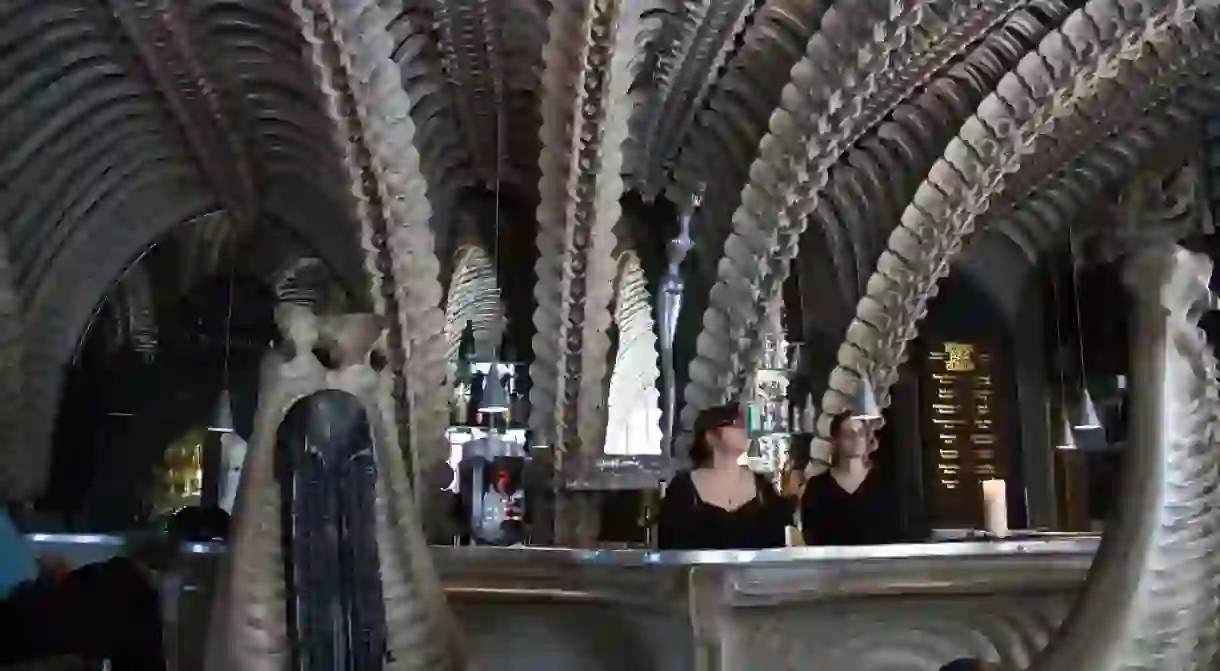Famous People You Didn’t Know Were Born In Switzerland

Despite being in the heart of Europe, Switzerland keeps a very low profile. Beyond Roger Federer, many would be hard-pressed to name anyone else famous born in the country. But the mountainous country has made quite a few notable contributions to global art and culture.

Le Corbusier
Born in the Swiss mountains under the less catchy name of Charles-Édouard Jeanneret-Gris, Le Corbusier became a leading 20th century architect and designer. He is widely acknowledged as the father of modern architecture. Le Corbusier’s buildings, with their characteristic use of concrete and open interiors, still look contemporary today. Signature projects include the Notre Dame du Haut church in France and the Villa Savoye on the outskirts of Paris. He is equally famous for the steel frame furniture line he created in 1928, which has become a modern design icon. That convoluted chaise longue you’ve been dreaming about was, in fact, designed by Le Corbusier.
https://www.youtube.com/watch?v=AZ6mOC4uSX4
Ursula Andress
Ursula Andress was the star of the scene in the first James Bond movie, Dr. No. As the shell diver, Honey Ryder, she emerged out of the waves in a white bikini with a knife strapped to her waist, becoming an overnight sex symbol. The actual bikini sold at auction in 2001 for close to $60,000. In Dr. No, her Swiss-German accent was judged too heavy and her character’s voice was dubbed. She went on to play alongside Hollywood legends including Elvis Presley in Fun in Acapulco, Frank Sinatra and Dean Martin in 4 for Texas, and opposite Marcello Mastroianni in The 10th Victim.
Herman Hesse
Herman Hesse, the 1946 Nobel Prize winner, was officially born in the Black Forest just across the border with Switzerland. He spent part of his childhood living in Switzerland, before setting up home there permanently in his early 20s. His writing is often dark, tracing the depths of despair, and mirroring his own troubled search for an identity. Before becoming a successful writer, Hesse was a failed missionary, a clock maker and a shop assistant in a bookshop. His most famous books, Siddhartha and Steppenwolf, take up the theme of man’s tortuous journey to self-knowledge.

H.R. Giger
H.R. Giger is one of the world’s most appreciated fantasy artists, whose surreal and nightmarish visions provided inspiration for Ridley Scott’s Alien. His unique bio-mechanical style captured the imagination of many, including the Oscar judges. Other films he worked on include Poltergeist II, Alien 3 and Species. Giger’s surreal creations appear on the covers of a number of music albums including Debbie Harry’s KooKoo and Magma’s Attahk. Fans can visit his museum in the turreted village of Gruyères in Switzerland. For the brave, it’s even possible to have a drink in the other-wordly Giger bar, with its unique vertebrae structure.

Paul Klee
Paul Klee is known for his colorful, wistful canvases with disjointed faces and stick figures in a child-like world. Klee was influenced by the Cubists including Picasso and Braque, and became close friends with Kandinsky, who helped the younger artist find his way. Despite the many years he spent living in Switzerland, the authorities considered Klee’s work too radical and only gave him citizenship posthumously. The Zentrum Paul Klee in Bern contains the world’s largest collection of his work, including paintings and drawings, housed in an iconic wave-like building designed by the Italian architect Renzo Piano. A good place to visit on a rainy day in Bern.
Carl Jung
Psychiatrist Carl Jung is considered to be among the founding fathers of modern psychology (along with Sigmund Freud). His focus on dreams, symbols and the working of the subconscious led to him creating the theory of analytical psychology, which influenced many contemporary artists including Hermann Hesse and Jackson Pollock. Jung is the creator of many concepts we take for granted today, including extroversion, introversion, the collective unconscious and archetypes. This last one became the foundation of the widely used psychometric test, the Myers-Briggs Type Indicator.

Henry Dunant
Although not a household name, Henry Dunant was instrumental in creating a global icon and was the first winner of the Nobel Peace Prize. As a wealthy merchant, he witnessed the battle of Solférino, between the Austrian Empire and the French alliance led by Napoleon III. With 40,000 dead or dying, it was one of the bloodiest battles of the 19th century. The experience led to his establishing the Red Cross. His personal life was equally colorful. After achieving fame, he lived as a beggar following bankruptcy, before finding shelter in a hospice in a Swiss village. Discover the full story at Geneva’s International Red Cross and Red Crescent Museum.













